Discover The Most Delicious Traditional Dishes in Germany
German traditional food and drink are almost certainly more exciting than most new residents and visitors expect it to be. Whilst there are regional variations in food culture, most German recipes focus heavily on bread, potatoes, and meat, especially pork, as well as plenty of greens such as types of cabbage and kale.
Today Germans appreciate well-prepared, well-served meals as much as they do a quick bite on the go. This is a country of food markets, beer gardens, wine festivals, food museums, and high-end restaurants, according to CNN.
1. Königsberger klopse
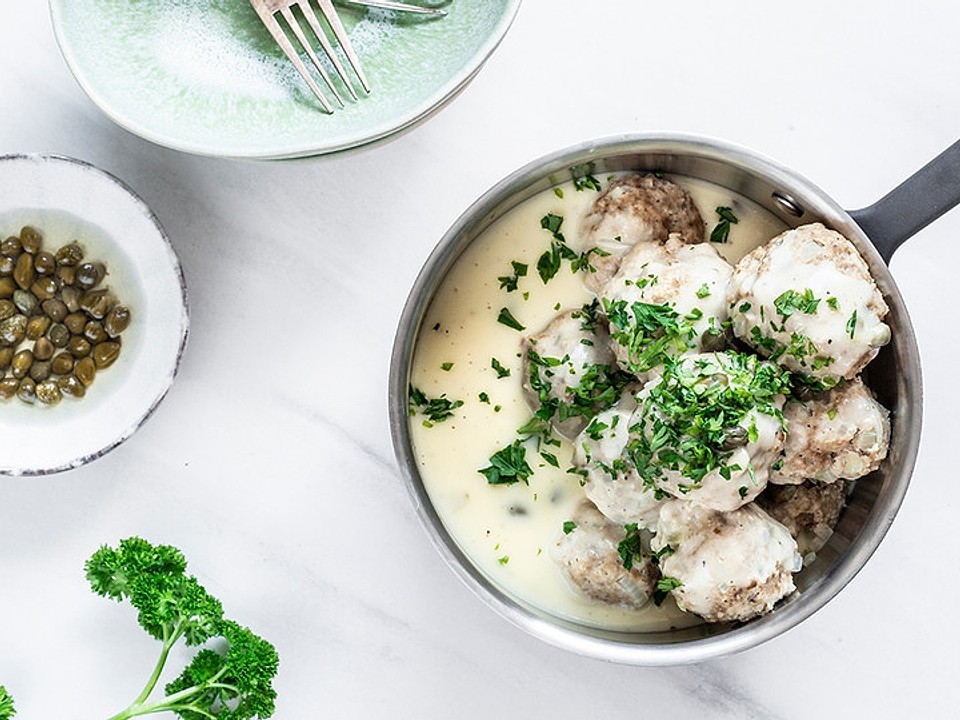 |
| Photo: Chefkoch |
Königsberger Klopse, also known as Soßklopse is a German specialty of meatballs in a creamy white sauce with capers.
The dish is named after the former German city of Königsberg (now Kaliningrad, Russia), and is one of the highlights of historical East Prussian cuisine. In the German Democratic Republic (GDR), the dish was officially called Kochklopse ("boiled meatballs") to avoid any reference to its namesake city, which in the aftermath of World War II had been annexed by the Soviet Union. The city's German inhabitants had been expelled, and the city had been repopulated with Russians and other Soviet citizens and renamed after Mikhail Kalinin, a close ally of Joseph Stalin in the Soviet leadership. Königsberger Klopse were jokingly referred to as Revanchistenklopse. Königsberger Klopse is still a popular dish in present-day Germany.
The meatballs are made from very finely minced veal, though less expensive beef or pork is often substituted, along with onions, eggs, a few (white-)bread crumbs, and spices, chiefly white pepper. The traditional recipe uses anchovy. If herring is substituted, the dish is called Rostocker Klopse. If both anchovy and herring are omitted, it may be generically called, Soßklopse (sauced meatballs).
The meatballs are carefully simmered in saltwater, and the resulting broth is mixed with roux, cream, and egg yolk to which capers are added. A simpler version of the recipe thickens the sauce with flour or starch only, omitting the egg yolk. A refined version uses only egg yolk as a thickener. Capers are an essential ingredient in all these versions.
2. Maultaschen
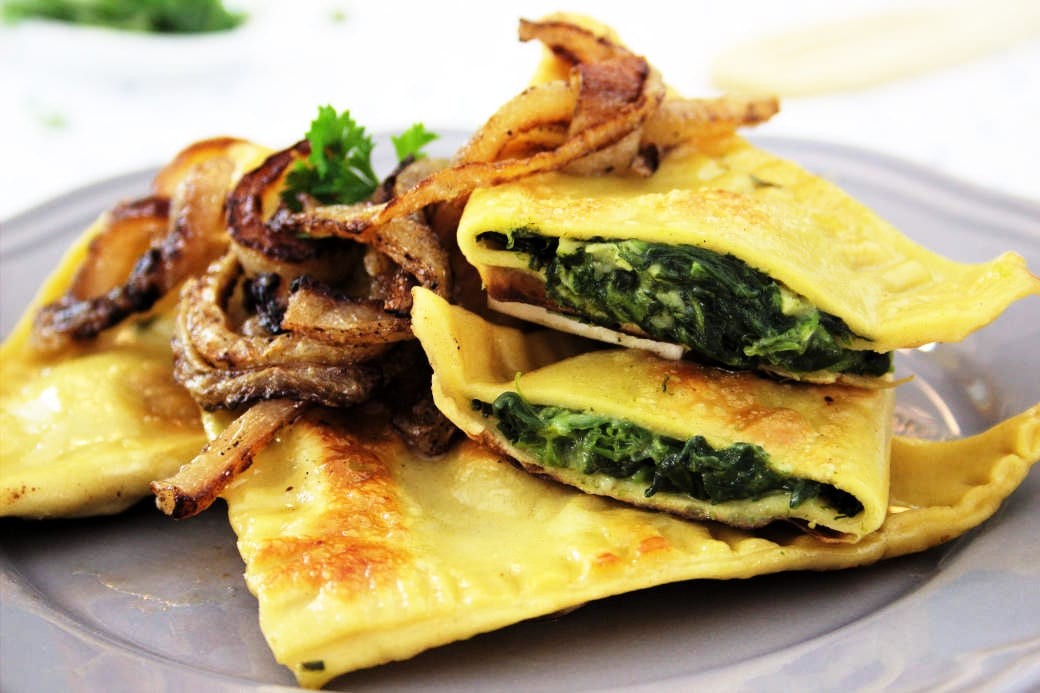 |
| Photo: My German recipes |
Maultaschen is a kind of large meat-filled dumpling in Swabian cuisine. They consist of sheets of pasta dough filled with minced meat, smoked meat, spinach, bread crumbs, and onions and flavored with various herbs and spices (e.g. pepper, parsley, and nutmeg). Maultaschen are typically 8–12 centimetres (3–4+1⁄2 inches) across. They are square or rectangular in shape.
On 22 October 2009, the European Union recognized Maultaschen (Schwäbische Maultaschen or Schwäbische Suppenmaultaschen) as a "regional specialty" and remarked that the dish is significant to the cultural heritage of Baden-Württemberg. This measure provides protection to the integrity of the dish, mandating that genuine Maultaschen are only produced in Swabia, a historical region that was incorporated into the modern German states of Baden-Württemberg and Bavaria.
In Swabia, Maultaschen is the traditional dish associated with the Lenten commemoration of Maundy Thursday and Good Friday. During Lent, Catholics and other Christians are encouraged to refrain from eating meat. However, Maultaschen is humorously associated with these days because the meat in the dish is concealed under the pasta dough and cannot be seen by God. Among the anecdotal stories regarding the origin of the dish, one claims that Maultaschen was created by the Cistercian monks of Maulbronn Abbey for that purpose. A Swabian German nickname for the dish, Herrgottsbescheißerle, used since the 1980s, means "small God-cheaters".
3. Labskaus
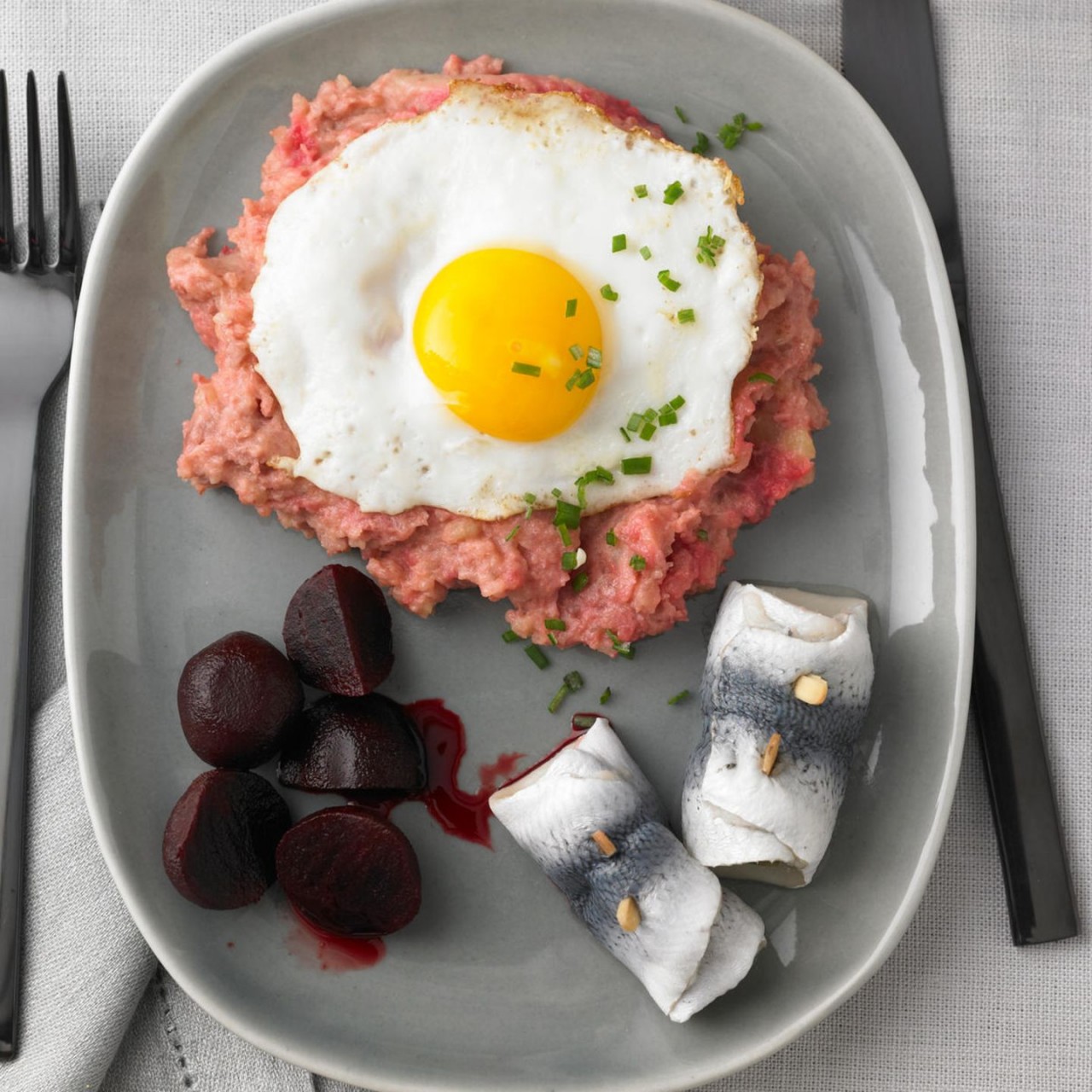 |
| Photo: Britgitte |
Labskaus is a Hamburg specialty. It is a dish the sailors cooked on the fishing ships when they were out in the sea for weeks and months. Because there were no fridges or cooling systems on these ships, they had to use long-lasting ingredients such as pickles, red beet, eggs, potatoes, onions, and beef that was cured in brine and is called corned beef. Nowadays we find this beef canned in supermarkets. But originally it is beef preserved with salt. The combination of these ingredients makes the dish called Labskaus which is served with potatoes and fried eggs, herring, and pickles.
The meal is traditionally prepared by boiling the beef in broth and then mincing it with beetroot, onions, boiled potatoes, and herring (some recipes use ham). Finally, the base is fried in lard, condiments as nutmeg, pepper, coriander, or allspice are added.
The dish is similar to the British hash.
Countless variations of the dish exist. For example, in Bremen, 95 km away from Hamburg, Labskaus usually is a preparation of fried corned beef, onions, and mashed potatoes with the beetroot and a Rollmops being served as a side dish.
Variations of the dish are also to be found in Scandinavia, generally without the use of herring. In Denmark, the dish is similar to the Bremen version, but without the herring and sometimes with added gravy. In Sweden, Lapskojs is a stew made with beef and mashed potatoes. In Norway, the word lapskaus more often refers to a variation of beef stew often made with gravy, or in some cases other types of stew, more or less identical to the Liverpudlian scouse.
4. Currywurst
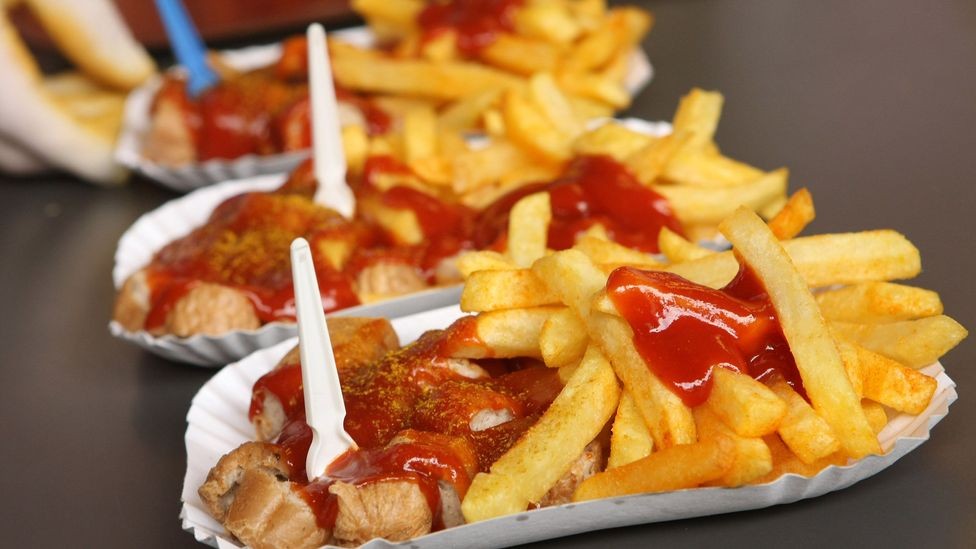 |
| Photo: BBC |
Currywurst is a fast food dish of German origin consisting of steamed, and fried pork sausage (German: Bratwurst) typically cut into bite-sized chunks and seasoned with curry ketchup, a sauce based on spiced ketchup or tomato paste topped with curry powder, or ready-made ketchup seasoned with curry and other spices. The dish is often served with fries.
The currywurst is an icon of German popular culture. Former Chancellor Gerhard Schröder is a noted fan of currywurst. By tradition, every candidate for the mayor of Berlin is photographed at a currywurst stand.
The invention of currywurst is attributed to Herta Heuwer in Berlin in 1949 after she obtained ketchup (or possibly Worcestershire sauce) and curry powder from British soldiers in Germany. She mixed these ingredients with other spices and poured it over grilled pork sausage. Heuwer started selling the cheap but filling snack at a street stand in the Charlottenburg district of Berlin, where it became popular with construction workers rebuilding the devastated city. She patented her sauce under the name "Chillup" in 1951. At its height, the stand was selling 10,000 servings per week. She later opened a small restaurant that operated until 1974. On 30 June 2013 Heuwer's 100th birthday was celebrated with a Google Doodle.
5. Döner kebab
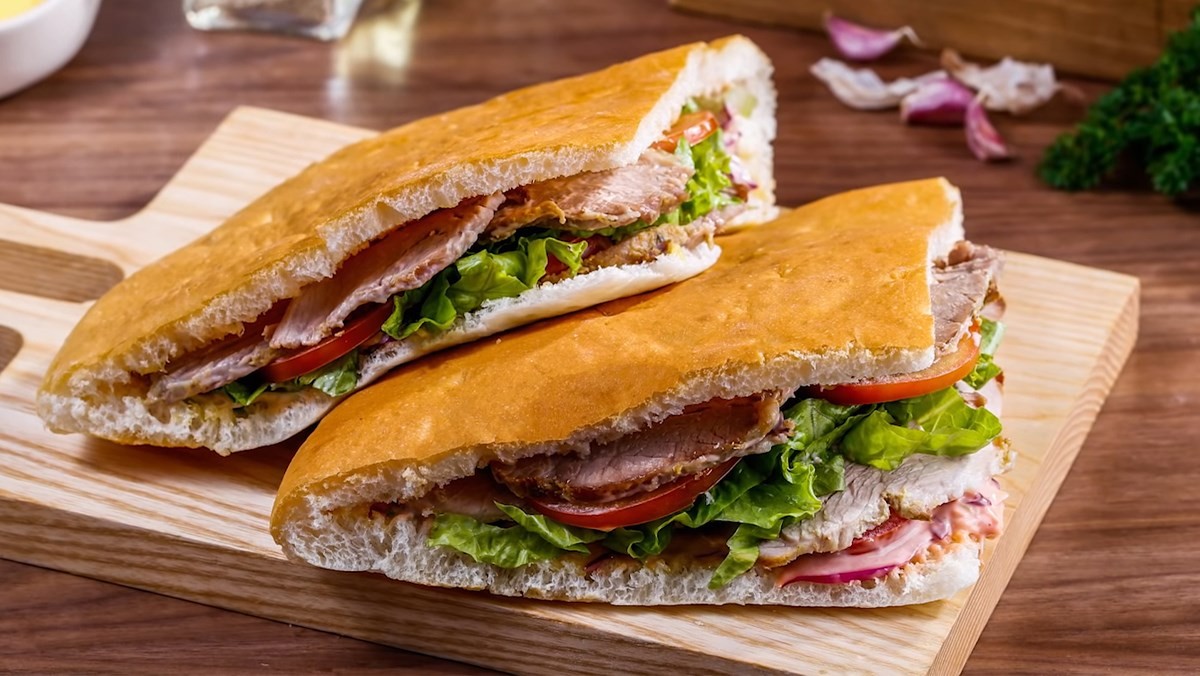 |
| Photo: Getty Images |
Doner kebab is a type of kebab, made of meat cooked on a vertical rotisserie. Seasoned meat stacked in the shape of an inverted cone is turned slowly on the rotisserie, next to a vertical cooking element. The operator uses a knife to slice thin shavings from the outer layer of the meat as it cooks. The vertical rotisserie was invented in the 19th-century Ottoman Empire and has inspired similar dishes such as the Arab shawarma, Greek gyros, Canadian donair, and Mexican al pastor.
The sliced meat of a doner kebab may be served on a plate with various accompaniments, stuffed into a pita or other type of bread as a sandwich, or wrapped in a thin flatbread such as lavash or yufka, known as a dürüm (literally meaning roll or wrap in Turkish). Kadir Nurman in the early 1970s introduced the sandwich or wrap form, which has become popular around the world as a fast food dish sold by kebab shops and is often called simply a "kebab". The sandwich generally contains salad or vegetables, which may include tomato, lettuce, cabbage, onion with sumac, fresh or pickled cucumber, or chili, and various types of sauces.
6. Schnitzel
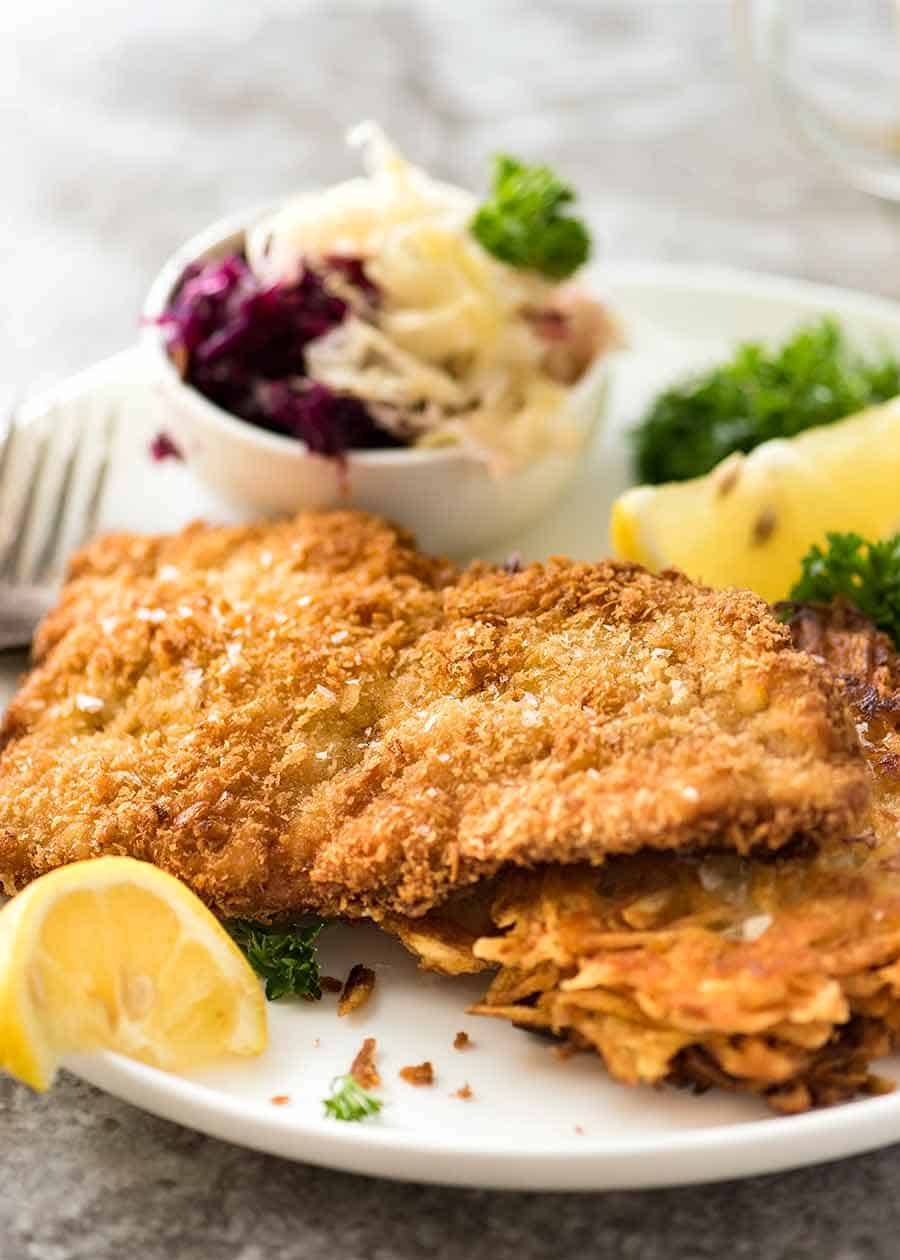 |
| Photo: RecipeTin Eats |
A schnitzel is a thin slice of meat. The meat is usually thinned by pounding with a meat tenderizer. Most commonly, the meat is breaded before frying. Breaded schnitzel is popular in many countries and is made using veal, pork, chicken, mutton, beef, or turkey. Schnitzel is very similar to the dish escalope in France, tonkatsu in Japan, cotoletta in Italy, kotlet schabowy in Poland, milanesa in Argentina, chuleta valluna in Colombia, and "chicken fried steak" of the United States.
Wiener schnitzel is a popular Viennese dish made of veal and traditionally garnished with a slice of lemon and either potato salad or potatoes with parsley and butter.
In Austria and Germany, Wiener Schnitzel is a protected geographical indication and must be made of veal. When other meats are used, it can be called Wiener Schnitzel vom Schwein/Pute/Huhn ("Viennese schnitzel of pig/turkey/chicken") or Schnitzel nach Wiener Art ("Schnitzel Viennese style").
The English term schnitzel means in general all types of breaded, fried flat pieces of meat. Due to the similarity between schnitzel and escalope, in many of the countries listed below, people sometimes refer to schnitzels as escalope, and vice versa.
7. Rouladen
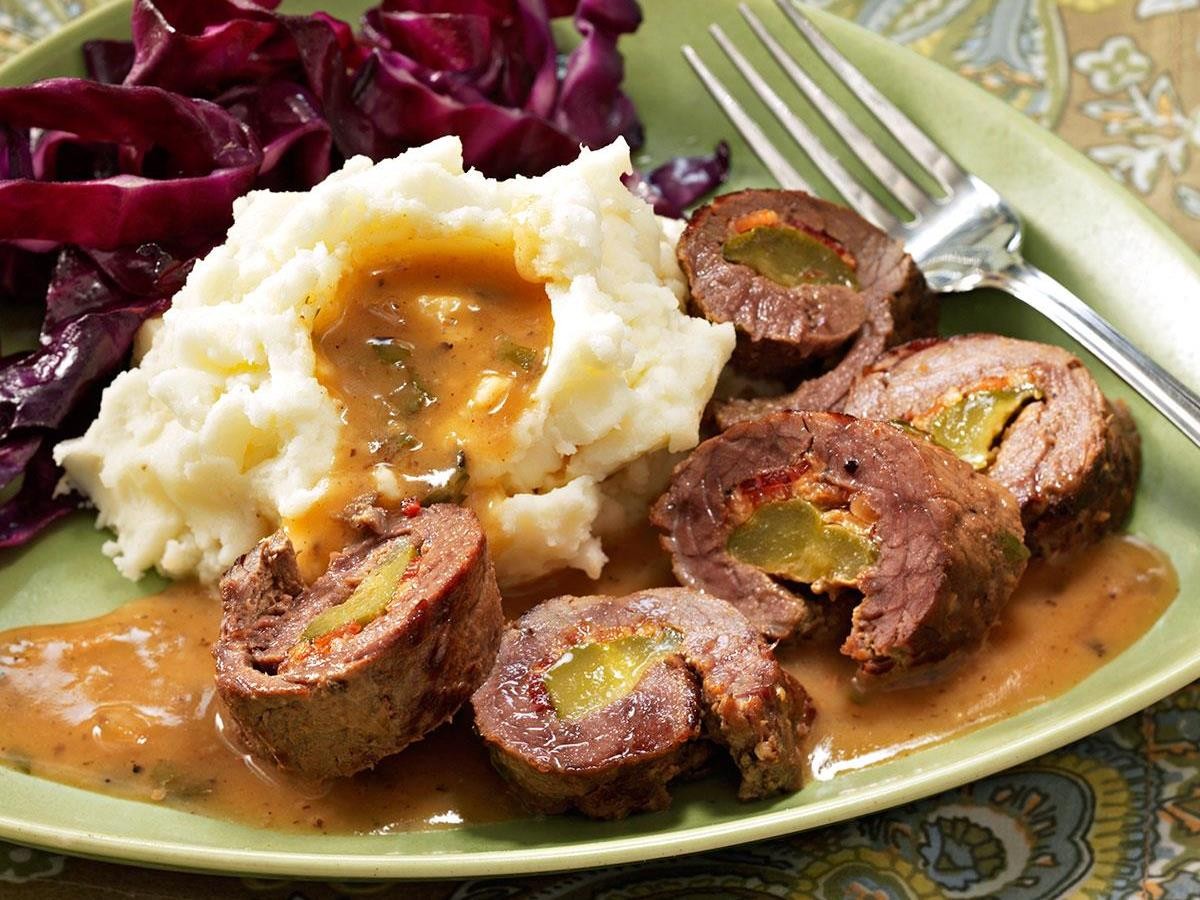 |
| Photo: Taste of Home |
Rouladen or Rinderrouladen (plural, singular Roulade) are a German meat dish, usually consisting of bacon, onions, mustard, and pickles wrapped in thinly sliced beef which is then cooked. The dish is considered traditional also in the Upper Silesia region of Poland where it is known as rolada śląska (Silesian roulade) and in the Czech Republic where it is known as španělský ptáček (Spanish bird).
Beef or veal is typically used, though some food scholars tend to believe that the original version was probably venison or pork, and pork is still popular in some areas. The beef rouladen as we know them today have become popular over the last century. The cut is usually topside beef or silverside since this is the cheaper cut. The meat is cut into large, thin slices.
The filling is a mixture of smoked and cooked pork belly, chopped onions, and chopped pickles (gherkins) which is at times varied by adding minced meat or sausage meat. The mixture varies from region to region. Rouladen is traditionally served for dinner. Red wine is often used for gravy.
8. Sauerbraten
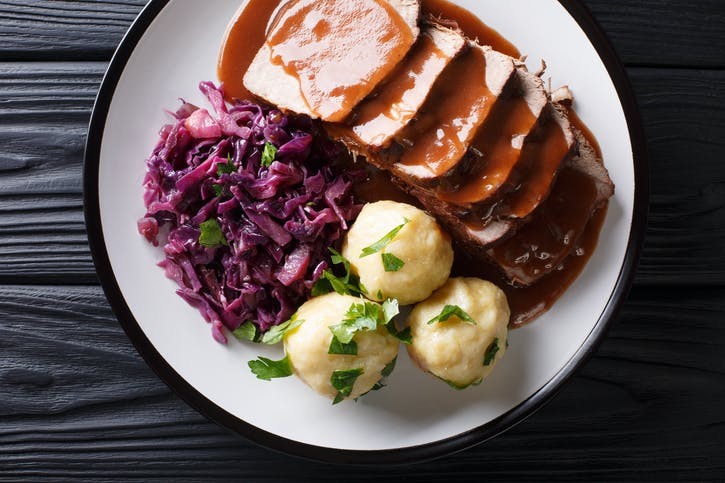 |
| Photo: Weber |
Sauerbraten is a traditional German roast of heavily marinated meat. It is regarded as a national dish of Germany and is frequently served in German-style restaurants internationally. It can be prepared from a variety of meats, most often from beef, but also from venison, lamb and mutton, pork and horse. Before cooking, the raw meat is marinated for three to ten days in a mixture of vinegar or wine, water, herbs, spices, and seasonings. Usually, tougher cuts of meat such as rump roast or a bottom round of beef are used, and the long marinating tenderizes the meat. A Sauerbraten dinner is almost always accompanied by a hearty gravy resulting from its roasting and is most often served with potato pancakes (Kartoffelpuffer), potato dumplings (Kartoffelklöße), or Spätzle pasta.
Ingredients used in the marinade, and accompaniments served with sauerbraten, vary across regions. Regional variants of the dish include those from Franconia, Thuringia, Rhineland, Saarland, Silesia, and Swabia.
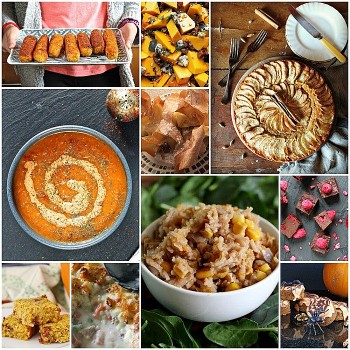 | Various Autumn Dishes Around The World for Food Lovers Now countries around the world are immersed in autumn colors, besides the beautiful scenery, the culinary specialties of this season are equally attractive to tourists. |
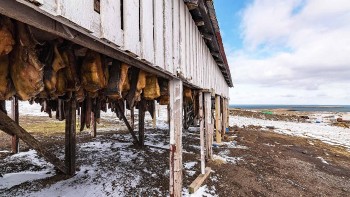 | Hákarl Fermented Shark Meat – The Most Stinky Delicacy of Iceland Iceland is famous for many wonderful sights and beautiful scenery, but it is also where "the stinkiest dish in the world" is made, the fermented ... |
 | Top 10 Most Beautiful Castles in Germany Europe is the land of palaces and castle, with outstanding, wonderful architectures. Take a look at these 10 most beautiful castles in Germany. |
Recommended
 Handbook
Handbook
Vietnam Moves Up 8 Places In World Happiness Index
 Handbook
Handbook
Travelling Vietnam Through French Artist's Children Book
 Multimedia
Multimedia
Vietnamese Turmeric Fish among Best Asian Dishes: TasteAtlas
 Handbook
Handbook
From Lost to Found: German Tourist Thanks Vietnamese Police for Returning His Bag
Popular article
 Handbook
Handbook
Prediction and Resolution for the Disasters of Humanity
 Handbook
Handbook
16 French Films To Be Shown For Free During Tet Holiday In Vietnam
 Handbook
Handbook
Unique Cultural and Religious Activities to Welcome Year of the Snake
 Handbook
Handbook







